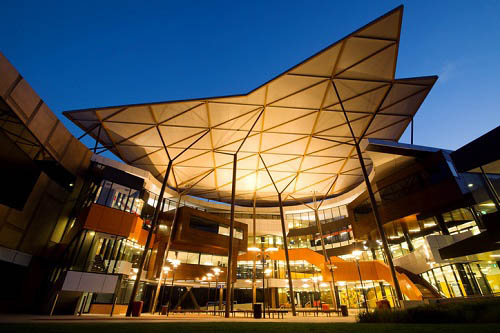
Research has shown that school design can play an important role in student well-being and academic outcomes.
These findings, which have implications for modifying, and creating learning spaces are critical to school leaders, educational planners and architects who are often tasked with driving innovation in education.
Last week, the Designing and Implementing Innovative Learning Spaces conference took place in Sydney, featuring interactive workshops on how to co-design spaces and engage teachers in collaborative practices.
Below, The Educator speaks to architect, David Tordoff, the Sydney Studio Head at Hayball, to find out more.
TE: What were some of the key take-away's from the conference for Australian K-12 principals?
DT: There were many key learnings from the Designing and Implementing Innovative Learning Spaces conference, however it became very apparent that the challenges facing contemporary educators are similar. While each school differs in terms of location and community, diverse and purposeful learning settings are required across the board to equip students with skills for the future.
Additionally, educators made it clear that a contemporary pedagogy is required to enable deep learning. However, they are struggling when it comes to translating a new pedagogy into a spatial belief and design. This is where experienced education focused architecture practices can greatly assist schools. There are a range of schools already implementing prototyping as a first step towards a changing pedagogy, as it enables them to test and refine different spaces with students before committing to anything.
TE: What does the research say about what makes an optimal contemporary learning space for children?
DT: Hayball is a linkage partner of the LEaRN (University of Melbourne) ARC-funded ILETC Innovative Learning Environments and Teacher Change research project. It is one of the first pieces of research to look to demonstrate the impact on teaching environment and learning outcome. One of the key findings so far is that teachers believe success in student learning is often constrained by the physical space, and therefore conversely the physical space can be used to enable creativity, critical thinking, character and collaboration or ‘deep learning’. The types of learning settings that enable this are diverse, adaptable and purposeful and have ready access to a wide variety of resources to support hands on activities.
TE: Can you tell us about the process and benefits of using a prototype to influence pedagogy, people and place?
DT: The process Hayball undertakes when working with an educator may differ with each school, however our preferred process is to co-create with the client and create a prototype building to test the waters.
We work with educators to develop a brief and truly understand the school community’s needs and the purpose for a new space. Then we conduct various in-depth tours to ensure we understand the environment and how the new project fits into the overall masterplan of the school. Before we start the design process, we also deep-dive into the school’s pedagogy and ensure its aligned with the design framework, but throughout the design process, we workshop our design recommendations with stakeholders to make sure everyone is ‘on the bus’ from the start. We are seeing a number of benefits of implementing a prototype phase where the learning community can trail a new space and pedagogy, such as a greater and more authentic engagement with the end user.


